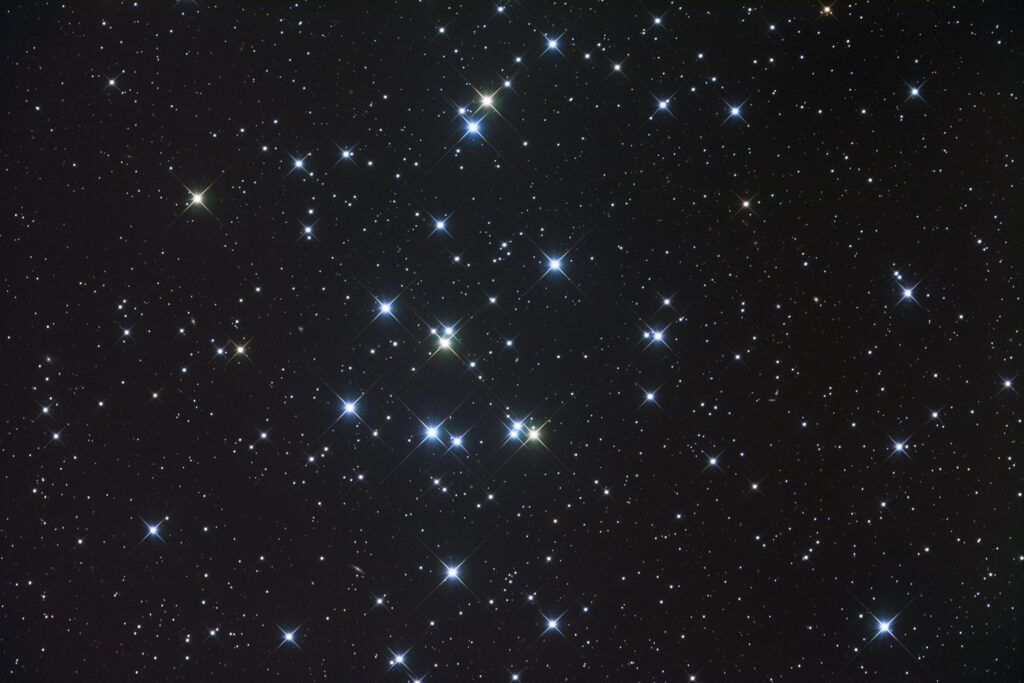Messier 44
"Praesepe", The Beehive Cluster. Open Cluster, Cancer
- Description
- Technical
- Links
The Beehive Cluster (also known as Praesepe (Latin for “manger”), M44, NGC 2632, or Cr 189), is an open cluster in the constellation Cancer. One of the nearest open clusters to Earth, it contains a larger population of stars than other nearby bright open clusters. Under dark skies, the Beehive Cluster looks like a small nebulous object to the naked eye, and has been known since ancient times. Classical astronomer Ptolemy described it as a “nebulous mass in the breast of Cancer”. It was among the first objects that Galileo studied with his telescope.
Age and proper motion coincide with those of the Hyades, suggesting they may share similar origins. Both clusters also contain red giants and white dwarfs, which represent later stages of stellar evolution, along with many main sequence stars.
Distance to M44 is often cited to be between 160 and 187 parsecs (520–610 light years), but the revised Hipparcos parallaxes (2009) for Praesepe members and the latest infrared color-magnitude diagram favors an analogous distance of 182 pc. There are better age estimates of around 600 million years (compared to about 625 million years for the Hyades). The diameter of the bright inner cluster core is about 7.0 parsecs (23 light years).
At 1.5° across, the cluster easily fits within the field of view of binoculars or low-powered small telescopes.
Telescope: ASA N16 f3.6
Mount: Astro Physics 1200GTO
Camera: SBIG STL-11000M
Guider: SBIG STL-Internal
L: 15×1 mins = 15 mins, R: 15×1 mins = 15 mins, G: 15×1 mins = 15 mins, B: 15×1 mins = 15 mins
Total Imaging Time: 1h 00m
Data Imaged remotely over 2 nights during January 2009.
Data acquisition & Processing by David Churchill.
None

